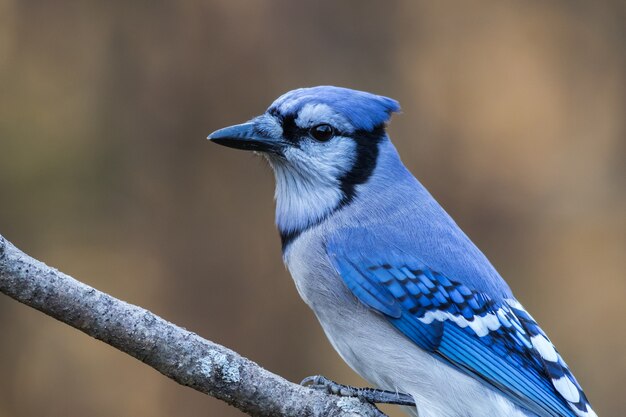Table of Contents
ToggleIntroduction to Blue Birds in Minnesota
Blue birds are a delightful sight in Minnesota’s diverse ecosystem. They are vital in maintaining ecological balance and adding vibrancy to the state’s natural beauty. Understanding the various types of blue birds found in Minnesota contributes to appreciating their significance and aiding in their conservation.
Common Blue Bird Species in Minnesota
Eastern Bluebird
The Eastern Bluebird (Sialia sialis) is common in Minnesota’s grasslands and open woodlands. With vibrant blue plumage on their backs, they exhibit a reddish-brown chest and a distinct white belly. These birds are known for their musical calls that echo across fields.
Physical Characteristics
Their small size, measuring 6 to 8 inches, makes them easily distinguishable. The males boast brighter blue feathers than the females. Eastern Bluebirds primarily feed on insects and berries, making them essential to the local ecosystem.
Behavior and Habits
These birds are cavity nesters and often rely on human-provided nest boxes for breeding. They exhibit exciting courtship rituals, including fluttering flights and displaying colorful plumage.
Mountain Bluebird
The Mountain Bluebird (Sialia currucoides) is another species found in Minnesota, although less frequently. Identified by its vibrant azure-blue plumage, these birds are adapted to colder climates, making Minnesota a suitable habitat.
Habitat and Distribution
Mountain Bluebirds prefer open areas and grasslands. Despite their name, they thrive in various habitats, including parks and farmlands across the state. Their resilience in harsh climates makes them a symbol of adaptability.
Adaptations to Minnesota Climate
Their ability to endure colder temperatures showcases their remarkable adaptation. They migrate to Minnesota during breeding seasons, building nests in tree cavities or birdhouses.
Indigo Bunting
The Indigo Bunting (Passerina cyanea) is a visually stunning blue bird found in Minnesota’s woodlands and edges of fields. Males flaunt a brilliant indigo-blue plumage, while females exhibit a more subdued brownish color.
Identification and Characteristics
With a diminutive stature and a slender beak, Indigo Buntings measure about 5 to 6 inches. They primarily feed on seeds and insects, contributing to the local ecosystem’s balance.
Nesting and Breeding
These birds construct cup-shaped nests using grass and leaves. Their breeding season sees the males singing melodious songs to attract mates, adding to the natural symphony of Minnesota’s outdoors.
Conservation Efforts and Challenges
Despite their beauty, blue birds face challenges in Minnesota due to habitat loss and environmental changes. Conservation efforts, including nest box programs and habitat restoration, aim to support their populations.
Threats to Blue Birds in Minnesota
Factors like urbanization, pesticide use, and loss of nesting sites pose significant threats to blue birds’ survival in the state.
Conservation Programs and Initiatives
Various organizations and individuals actively participate in conservation programs by providing nesting habitats and creating awareness about the importance of preserving blue bird populations.
How Individuals Can Contribute
By installing birdhouses, avoiding pesticide use, and supporting local conservation initiatives, individuals can contribute to the protection of blue birds in Minnesota.
Observing Blue Birds
Minnesota offers fantastic locations for birdwatching, providing enthusiasts ample opportunities to observe these beautiful creatures in their natural habitats.
Best Places for Blue Bird Watching in Minnesota
Places like state parks, nature reserves, and designated birding trails offer ideal spots for blue bird sightings. Locations such as Blue Mounds State Park and Sherburne National Wildlife Refuge are known hotspots.
Tips for Successful Bird Watching
Patience and quiet observation are key. Using binoculars and visiting during early morning hours enhance the chances of spotting these elusive birds.
Conclusion
Blue birds in Minnesota contribute to the state’s biodiversity and natural allure. Understanding their types, habitat, and conservation needs is crucial for preserving these charismatic species for future generations to admire and cherish.
Unique FAQs
- Are all blue birds in Minnesota truly blue?
Not necessarily. While some, like the Eastern Bluebird and Indigo Bunting, exhibit striking blue hues, others, like the Mountain Bluebird, display shades of blue but may vary in intensity.
- How can I attract blue birds to my backyard?
Installing nest boxes designed for blue birds, providing a water source, and planting native berries and insects attract these birds to residential areas.
- Are blue birds migratory in Minnesota?
Yes, many blue bird species in Minnesota migrate during certain seasons. They often move to warmer regions during winter and return for breeding in the spring and summer.
- Do blue birds face specific threats in Minnesota?
Habitat loss due to urbanization and agricultural practices, along with climate changes and pesticides, pose significant threats to blue bird populations in Minnesota.
- How can I support blue bird conservation efforts?
You can contribute by participating in local conservation programs, installing birdhouses, using bird-friendly practices in your garden, and advocating for habitat preservation.





